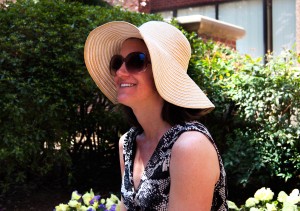Is your family gearing up for a season of sun, surf and sand? Before hitting the beach this summer it’s important to remember that protecting your skin from the sun is vital to reducing your risk of skin cancer, the most common cancer diagnosis and also the most preventable cancer. To spotlight National Skin Cancer Detection and Prevention Month we separate the sun safety facts from the most commonly heard myths to keep you, your family and friends sun savvy this season.
Myth: Indoor tanning is safer because it protects you from sunburn by giving you a base tan.
Fact: There is no such thing as a “safe” or “healthy” tan. A tan is damaged skin and can put the body at risk for skin cancer. Studies show that melanoma, the most lethal form of skin cancer, is the fastest-growing cancer and is being diagnosed in more and more young people, largely attributable to the use of tanning beds.
Myth: You can’t get sun damage on a cloudy day.
Fact: Your skin is at risk even when the sun’s not shinning. The sun’s ultra violet rays can actually break through the clouds. Even on cloudy days you should use sunscreen and lip balm with UVB and UVA protection with SPF 30 or more.
Myth: You need sunlight to get enough Vitamin D.
Fact: The safest way to get Vitamin D is through a healthy diet and supplements, not long hours in the sunlight. Foods such as milk, yogurt, salmon and tuna are all rich with this nutrient. Fifteen minutes a day of sun exposure for three days a week is all you need for adequate levels of Vitamin D.
Myth: People with darker skin can’t get skin cancer.
Fact: Skin cancer doesn’t discriminate – men and women of all ethnicities are at risk. Although darker-skinned people are less likely to get skin cancer than white people, they are typically more likely to die from the disease.

Fact: The majority of a person’s sun damage actually occurs later on in life. While many parents are vigilant with keeping their kids safe with sunscreen and protective clothing, they often don’t practice what they preach. It’s important to protect both your children and yourself from sun exposure whenever you are outdoors.
Remembering these sun safety facts can help you and your loved ones prevent sunburn and early signs of aging and most importantly reduce your risk of skin cancer. You can still have fun in the bright summer sun by following these simple steps:
- Apply one ounce of sunscreen with SPF 30 or higher before going outside
- Wear protective clothing – sun glasses, hats and clothing made of tightly woven material with long sleeves
- Avoid tanning beds and sun exposure when it’s the brightest
- Routinely check your skin by following the ABCDE rule
Visit Save Your Skin to learn more about keeping your skin healthy year round.

No Comments